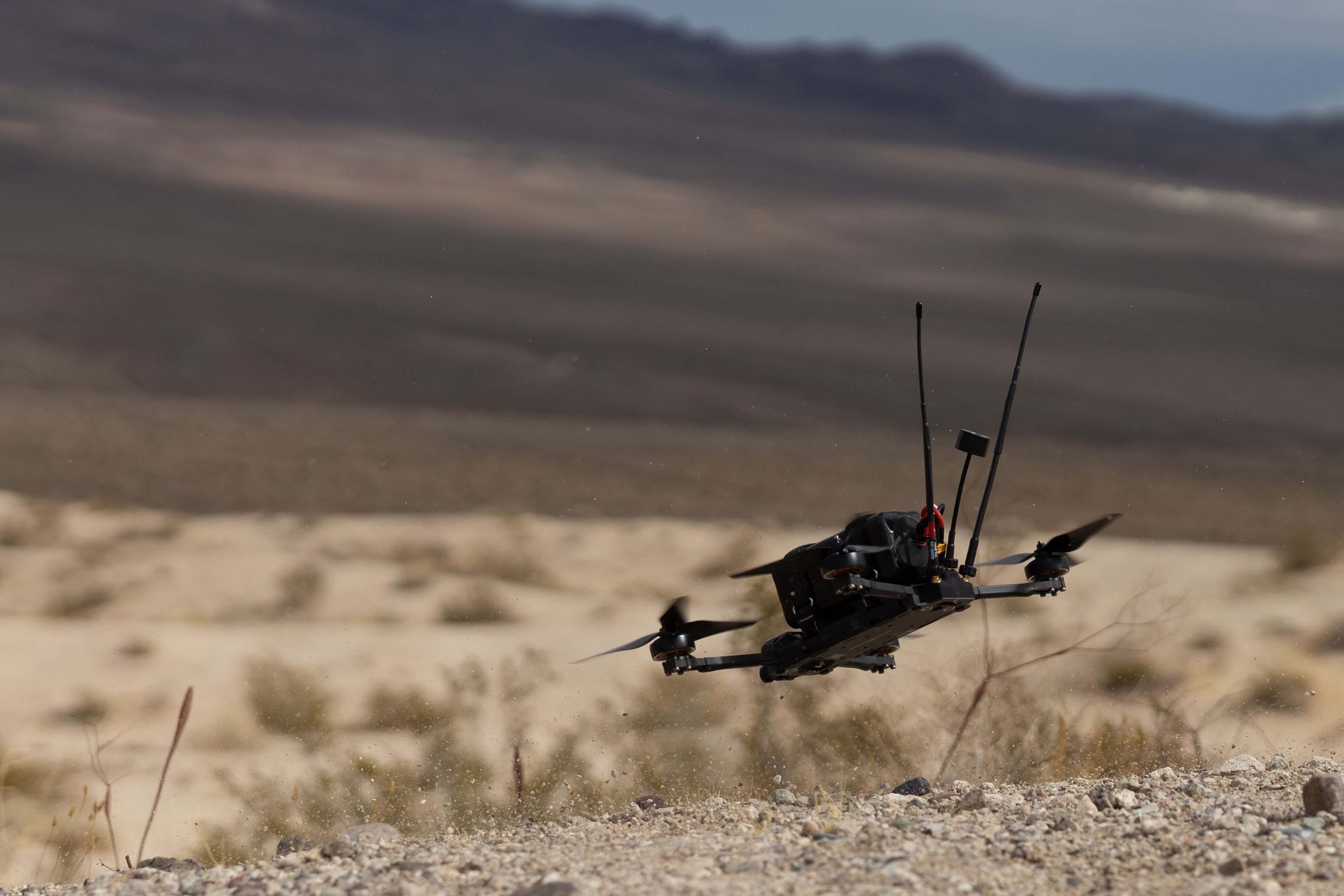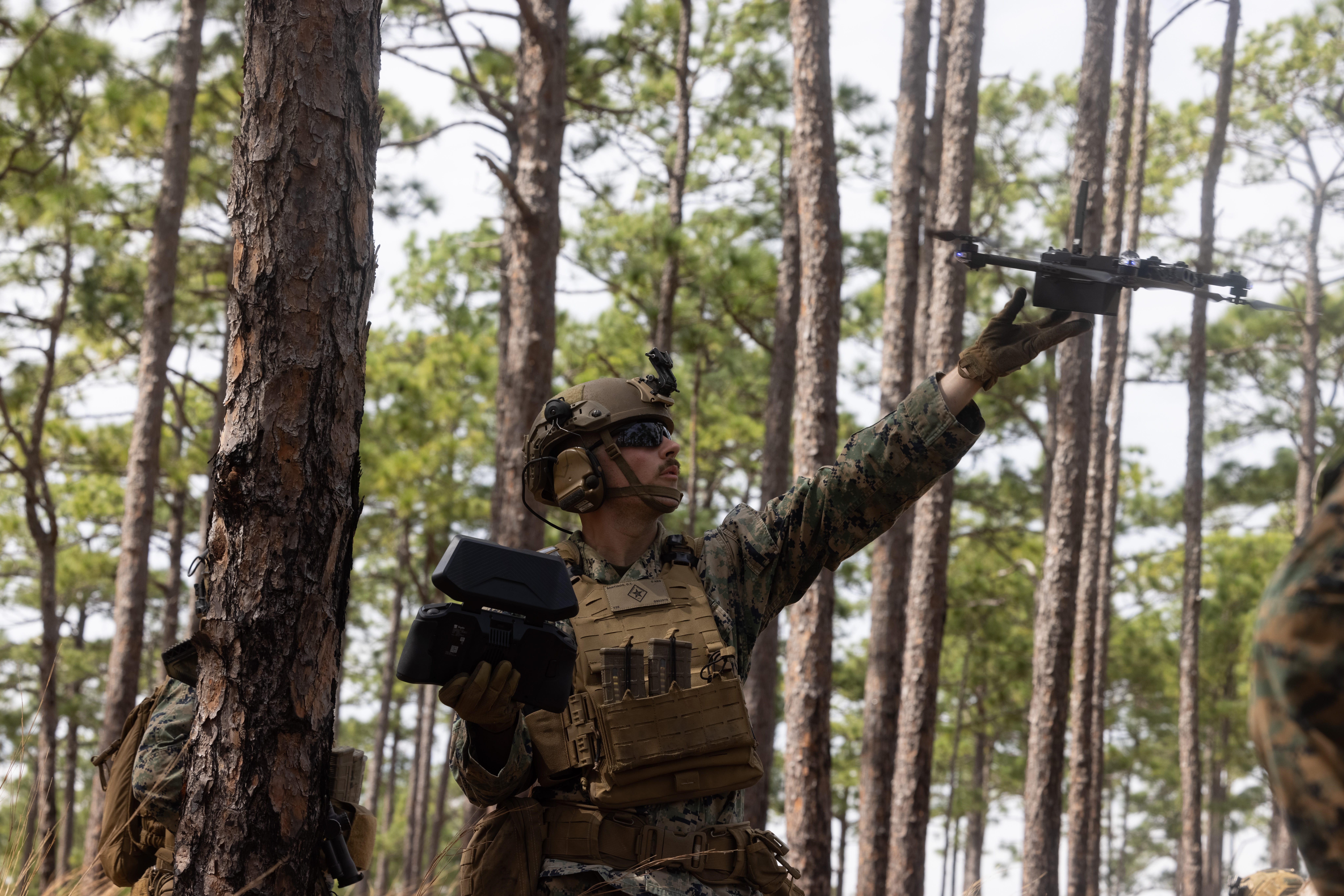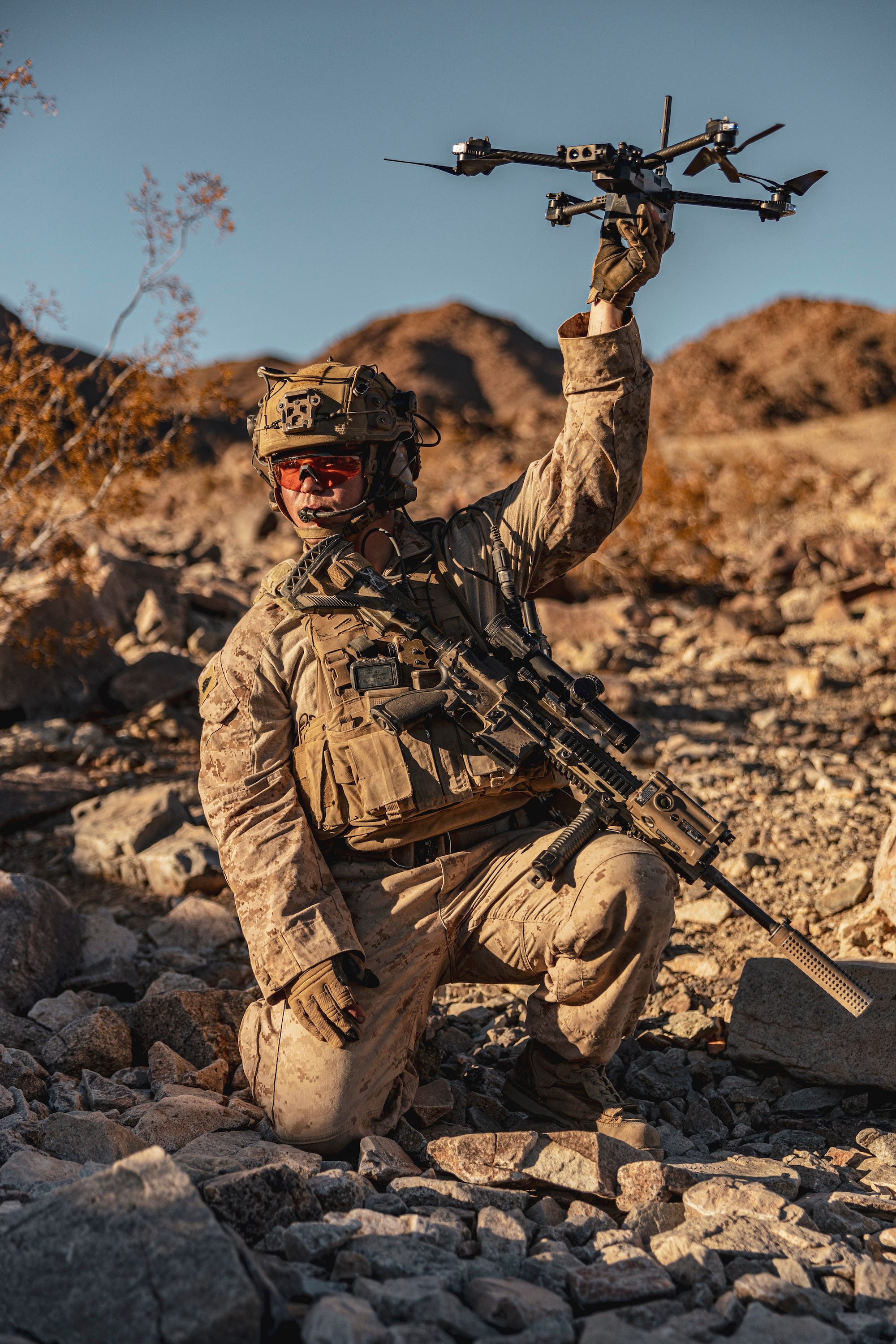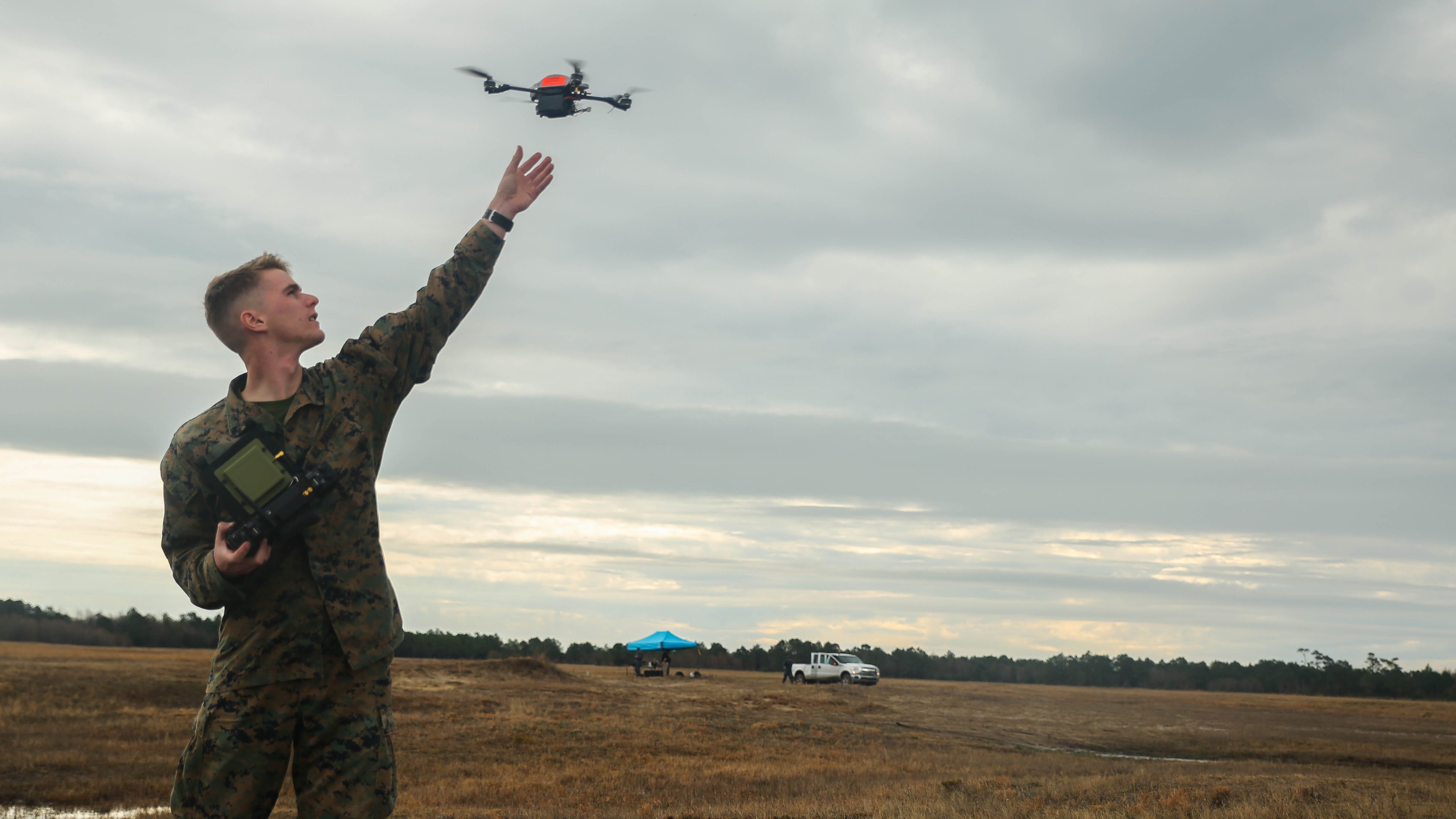
Lance Cpl. Saige Steiber/US Marine Corps
Some Marine leaders are desperate to see a major cultural shift when it comes to drones, saying old mindsets and acquisition processes are what’s holding back the Corps from going all in on this technology.
“It’s not enough,” Col. Sean Hoewing, the director of the Capabilities Development Directorate’s Aviation Combat Element, said of the speed at which the Corps is adopting drone technology.
“It’s nowhere near where it needs to be,” he said on Tuesday at the Modern Day Marine symposium in Washington, DC.
Marine Corps leaders at the symposium are taking drones seriously, with a palpable sense of urgency. But the service, and the rest of the Defense Department, are still struggling to break free of a cumbersome acquisitions process that has proliferated over the last two decades.
“Our acquisition system is designed to reduce acquisition risk to zero,” said Lt. Gen. Benjamin Watson, who oversees the Marine Corps’ Training and Education Command, acknowledging the challenges in policy and regulation.
A service’s tightly controlled budget can contribute to an environment in which sometimes perfect becomes the enemy of good, he said. And in the Corps’ quest to spend dollars judiciously (its the only service to have passed a Pentagon audit), it can foster an unwillingness to take risks like rapidly and widely fielding technology like drones.

Lance Cpl. Abram Maestre, US Marine Corps
“We’ve got to field drones at scale in order to be able to pressurize our training really, to work through some of the real hard problems,” Watson said, adding that he expects to see the Marine Corps fielding drones and loitering munitions more broadly over the next year.
The ‘Valley of Death’
The war in Ukraine has seriously highlighted the value of employing small uncrewed aerial systems like quadcopter drones at scale, down to the squad level.
The era of large fixed-wing drones like the Reaper dominating uncrewed warfare has ended as a wide range of drones surge onto the scene. Some military drones can even fit in a backpack or pocket.
The US is coming around, but has been slow to adopt the tech widely, burdened by decades Global War on Terror-era bureaucracy.
“We are not coordinating as tightly as we need to,” Maj. Gen. Farrell Sullivan, the director of the Marine Corps Capabilities Development Directorate, said.
“We are part of the Valley of Death,” said Sullivan, referring to the arduous path companies embark on when doing business with the DoD, often ending up in bureaucratic quicksand.
Drones are the name of the game at this year’s Modern Day Marine, where commanders and senior enlisted advisors have consistently expressed concerns about how to get Marines of all ranks skilled up on drones, just as they are with their rifles.

Lance Cpl. Enge You/US Marine Corps
Marine leaders — from mid-grade battalion commanders and senior enlisted advisors up to generals like Sullivan and Watson — were quick to point out that the Corps has to do more to obtain and integrate drones.
“The biggest obstacle is one million percent cultural,” said Col. Scott Cuomo, the commander of the service’s Weapons Training Battalion, which oversees the Corp’s new Attack Drone Team. The team will serve as a repository of knowledge to help boost drone usage throughout the service.
Cuomo spoke of a young enlisted Marine who used a $20 commercial simulator for 20 hours, and found a six-hour course, to develop drone proficiency. Such ad hoc training is a far cry from formal months-long certification-driven courses that the military uses, but that’s the type of out-of-the-box thinking the Corps needs.
Attempts to shift things up include newly established advisory boards to streamline communication from junior troops to Beltway-based colonels, but the Corps is poised to run up against problems not easily remedied in its quest to field more drones.
A hard thing to change
The Marine Corps is less agile financially than other services, a senior Marine told Business Insider, adding that the Army and Special Operations Command are better equipped to quickly divert funding to new priorities like drone platforms.
Much of the Corps’ money is heavily invested in its Force Design initiative, and those plans don’t really include making UAS platforms major priorities.
Plus, the Corps is up against competing funding priorities for things like retention and big initiatives like Barracks 2030, the service’s initiative to fix — and then maintain — decades-old shoddy barracks where the bulk of junior enlisted live.
To help the Marine Corps achieve its drone goals, Sullivan and Hoewing have established two advisory boards focused on offensive and defensive drone operations. These boards will provide a faster conduit from ground-level troops experimenting with UAS platforms on local ranges to Pentagon leaders with influence who can advocate for their needs and coordinate with other key players.

US Marines Corps/Sgt. Lucas Hopkins
The forthcoming advisory boards come on the heels of the establishment of the recently announced Marine Corps Attack Drone Team,
Rapidly adopting and proliferating the tech is bound to bring more headaches for Marines to figure out too, Marines said. Batteries alone are a hassle.
Drone battery operations varies depending on the environment and temperature, Sullivan said. The DoD has extensive safety requirements for storing and transporting batteries, meaning that the technology will inherently bring more and more problems for Marines to solve. There are also doctrinal requirements and training programs to sort, and actual battlefield operations to figure out when it comes to drones.
And if something isn’t an official DoD “program of record,” getting an investment long-term in any equipment is nearly impossible.
The post The US military needs to get out of its own way on drones, Marine Corps leaders say appeared first on Business Insider.




